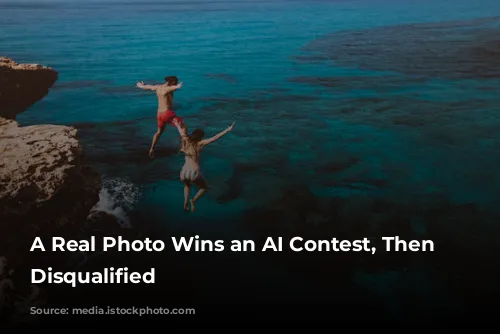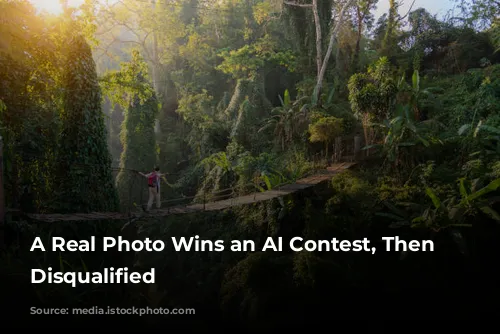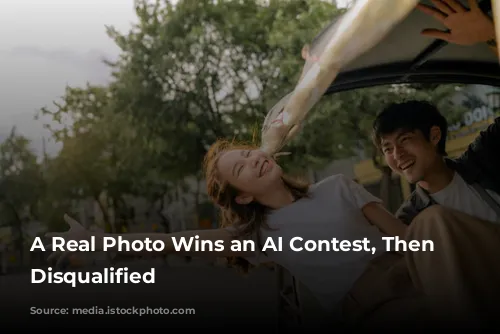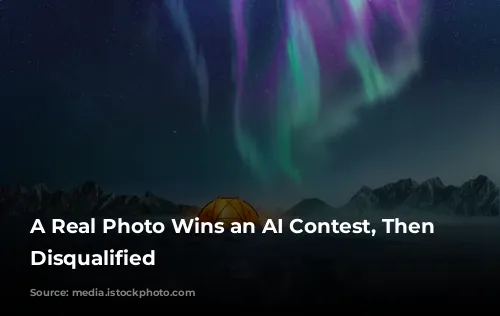This is a story that has the potential to spark a conversation about the intersection of art, technology, and human creativity. A real photograph, submitted to a photo contest for A.I.-generated images, won an award. The twist? The photo was disqualified after the photographer revealed it was not created by artificial intelligence. Let’s dive into this intriguing story and its implications.

A Photographer’s Clever Challenge
Miles Astray, a 38-year-old photographer, submitted a real photograph of a headless flamingo standing in a surreal beach landscape to the 1839 Awards, a prestigious photo competition. This competition, judged by prominent figures from the world of art, photography, and technology, featured a category specifically for images generated by artificial intelligence.
Astray’s image, titled FLAMINGONE, won both a bronze award in the A.I. category and the People’s Choice Award. This clever stunt, while ultimately leading to his disqualification, brought to light the growing concerns about the impact of artificial intelligence on creative fields.

A Deliberate Act, A Powerful Message
Astray’s decision to submit a real photo into the A.I. category was no accident. He explained his motivations: “Seeing A.I.-generated images surpassing actual photos in competitions, I realized I could turn this story on its head by submitting a real photograph in an A.I. competition.” He wanted to challenge the prevailing perception of artificial intelligence as the ultimate creative force.
Astray’s action echoes similar incidents, such as Boris Eldagsen’s win with an A.I.-generated image in a photography competition and the disqualification of Australian photographer Suzi Dougherty, whose submission was wrongly assumed to be created by A.I. Astray’s act, however, stands out as a bold and calculated statement on the limitations of A.I.
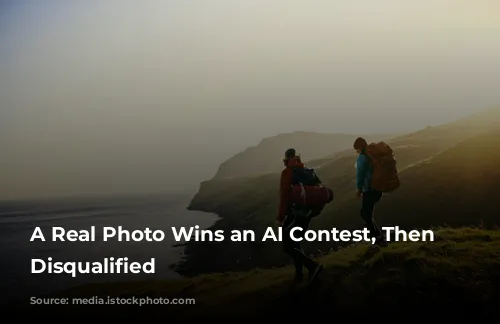
A Disqualification, But Not a Defeat
While Astray’s win was revoked, the organizers of the 1839 Awards, acknowledging the powerful message behind his act, called it an “important, relevant, and timely statement.” They stood by their decision to disqualify Astray’s entry to ensure fairness for all participants.
Astray, however, accepted the disqualification, calling it “completely justified and right.” He even agreed to work with the contest organizers to write an editorial for their magazine on the topic of A.I. and human creativity.

The Power of Perception
The organizers of the 1839 Awards believe Astray’s real image resonated with viewers because it was uncannily similar to what A.I. could create. This incident raises questions about our perception of reality and the blurring lines between the real and the artificially generated. It seems that Astray’s work tapped into a deeper human connection, perhaps demonstrating that even in an age of AI, the human touch remains powerful and captivating.
Astray himself believes his work stood out because it was less generic and more unexpected than the A.I.-generated entries. He views his win as a victory for all creatives who feel threatened by the rise of artificial intelligence. This story highlights a critical conversation that needs to be had about the role of human creativity in a technologically advanced world.

